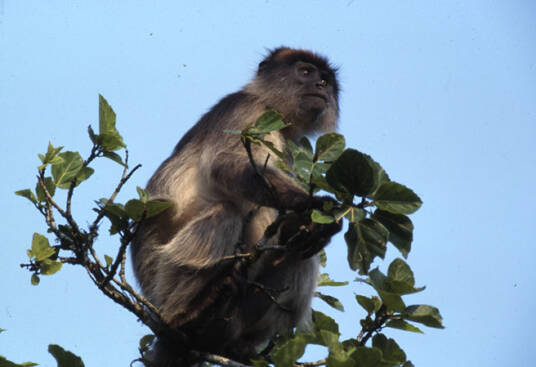Piliocolobus epieni
IUCN
LCBasic Information
Scientific classification
- name:Piliocolobus epieni
- Scientific Name:Piliocolobus epieni,Niger Delta Red Colobus
- Outline:Primates
- Family:Cercopithecidae R.olobus
Vital signs
- length:53-63cm
- Weight:7-11kg
- lifetime:No verification information
Feature
One of the top 25 most endangered primates in the world
Distribution and Habitat
It is found in the swamp forests of the Niger Delta, Nigeria, between the Forcados-Nikrogha Creek and the Sagbama-Osiama-Agboi Creek.
Appearance
The Niger Delta red colobus has a slender body, with a head-body length of 53-63 cm, a tail length of 60-70 cm, and a weight of 7-11 kg. It has a typical small head, a long back, and a round abdomen. The limbs are very long. Like other colobus species, the anal warts are small, the tail is long, and the cheek pouches are smaller than those of ordinary monkeys. The fingers are particularly long, and the slender fingers are clenched back to form a strong hook, which is suitable for grasping branches. Like other African colobus species, the thumb has degenerated into a small wart. The head is black, the back, limbs and other parts are brown-red or chestnut brown, and the chest and abdomen are grayish white. The hair on the forehead is typically parted in the center downward.
The snout is prominent, the two jaws are thick, there are 32 teeth, the nostrils are close together facing forward and downward, and the hands and feet have 5 fingers and toes, with flat nails, all of which can sta
Details
The Niger Delta Red Colobus (scientific name: Piliocolobus epieni) was first discovered by scientists in 1993. At that time, scientists believed it was a subspecies of the Eastern Red Colobus, but in 2007, genetic research upgraded the monkey to an independent species.

Listed as one of the top 25 most endangered primates in the world.
Listed in the 2008 Red List of Endangered Species of the World Conservation Union (IUCN) ver 3.1 - Critically Endangered (CR).
Protect wild animals and eliminate game.
Maintaining ecological balance is everyone's responsibility!








